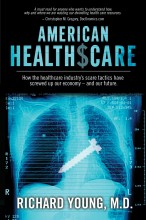patients The American Heart Association (AHA) recently proposed new guidelines for all doctors to screen and treat for high cholesterol. For doctors and patients to follow this would result in a large increase in the number of Americans taking statins.
One of the things I like about the new proposal is that there is no more chasing a number. This was frustrating for doctors and patients to keep having lab draws and medication adjustments to try to get the LDL cholesterol level below 100 mg/dL. A lot of doctors would add additional medicines beyond the statins to reach the target. There is ample proof that none of the other cholesterol-lowering medicines actually impact mortality or overall quality of life, so all of that effort was and is a huge waste.
From the doctors’ perspective, there was a dark side to the numerical target. Simplistic regulators of American medicine essentially conclude that I am a bad doctor if my patient’s cholesterol was 101. It doesn’t meet the target. Never mind that the patient started at a LDL cholesterol level of 240 or couldn’t afford to take her medicines.
Not chasing numbers is a good thing. The AHA guidelines now sound much more like the British guidelines in the sense that they want doctors to declare a patient either high risk or low risk. The high risk patients are put on a statin with no subsequent cholesterol number checking. The low risk don’t get statins.
Now for the rub. The British have been using the number of a 20% risk of developing symptomatic coronary disease in the next 10 years as their definition of high risk. NICE wants to lower that to 10%, but that number has created a lot of controversy in Britain. Many GPs and other feel this would result in too many British patients being pushed to take a drug of marginal value. In fact, about 2/3 of GPS are just not using this new threshold. (This article also talks about the side effects of statins that were largely ignored in some of the risk-benefit calculations.)
The AHA wants the high-risk definition to be 7.5%, and it even includes a risk calculator on its website. When the guidelines first were published, many criticized the risk calculator for exaggerating risk. Now there is more proof that this is the case.
A study in Annals of Internal Medicine compared 5 risk scores to data they gathered in a longitudinal study of the progression of cardiovascular disease in 50 to 74-year olds: the prime population most likely to benefit from statins. The authors calculated that the AHA score exaggerated the risk by 25% to 115%. Some of the other predictors overshot the mark by up to 154%. This means that potentially over twice the number of patients would be cajoled into taking statins who really aren’t high-risk patients.
We should adopt a similar approach as the British and use the high-risk/low-risk approach with no number chasing after the medicine is started. The Medicare meaningless use criteria should be updated to reflect this approach. We should use a CVD risk of 10-20% as the definition of high risk (There are differing opinions by reasonable people on both sides of the pond as to the best number). The cardiologists efforts to scare millions of people into taking marginally effective statins because of a faulty risk calculator should be ignored.



As long as the debate is among members of a single faction, little is likely to be accomplished. The number of people with credentials who question LDL and other traditional risk factors and who recommend turning away from the dietary recommendations of low total- and saturated fat and cholesterol is monotonically increasing and the persistence of the medical profession in refusing to face their critics can only lead to more confusion. A significant number of scientists and physicians point to better targets than LDL, e.g. pattern B or its more easily measured surrogate HDL/TAG which respond dramatically to dietary carbohydrate restriction. But, most of all, the statistics of statins shows that the only “risk factor” that is reliably targeted by statin is having had a cardiovascular event. Am I exaggerating?